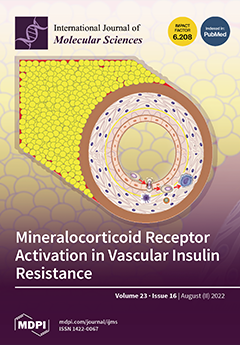Hydroxycinnamoyl-CoA shikimate/quinate hydroxycinnamoyl transferase (HCT) is considered to be an essential enzyme for regulating the biosynthesis and composition of lignin. To investigate the properties and function of
ZjHCT4, the
ZjHCT4 gene was cloned from
Zoysia japonica with a completed coding sequence of
[...] Read more.
Hydroxycinnamoyl-CoA shikimate/quinate hydroxycinnamoyl transferase (HCT) is considered to be an essential enzyme for regulating the biosynthesis and composition of lignin. To investigate the properties and function of
ZjHCT4, the
ZjHCT4 gene was cloned from
Zoysia japonica with a completed coding sequence of 1284-bp in length, encoding 428 amino acids. The
ZjHCT4 gene promoter has several methyl jasmonate (MeJA) response elements. According to analysis of expression patterns, it was up-regulated by MeJA, GA
3 (Gibberellin), and SA (Salicylic acid), and down-regulated by ABA (Abscisic acid). Ectopic
ZjHCT4 expression in creeping bentgrass causes excessive plant elongation. In addition, the content of G-lingnin and H-lingnin fell in transgenic plants, whereas the level of S-lingnin increased, resulting in a considerable rise in the S/G unit ratio. Analysis of the expression levels of lignin-related genes revealed that the ectopic expression of
ZjHCT4 altered the expression levels of a number of genes involved in the lignin synthesis pathway. Simultaneously, MeJA, SA, GA
3, IAA, BR (Brassinosteroid), and other hormones were dramatically enhanced in transgenic plants relative to control plants, whereas ABA concentration was significantly decreased. Expression of
ZjHCT4 impacted lignin composition and plant growth via altering the phenylpropionic acid metabolic pathway and hormone response, as revealed by transcriptome analysis. HCTs may influence plant lignin composition and plant development by altering hormone content. These findings contributed to a deeper comprehension of the lignin synthesis pathway and set the stage for further investigation and application of the
HCTs gene.
Full article






